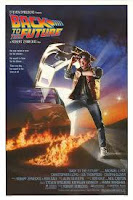 |
| Longfellow |
By the shining Big-Sea-Water,
Stood the wigwam of Nokomis,
Daughter of the Moon, Nokomis.
Dark behind it rose the forest,
Rose the black and gloomy pine-trees,
Rose the firs with cones upon them;
Bright before it beat the water,
Beat the clear and sunny water,
Beat the shining Big-Sea-Water.
These famous lines are from Henry Wadsworth Longfellow's epic poem, The Song of Hiawatha. I know what's going through your mind right now: "What in the world does this poem have to do with Larnelle Harris and spirituals? Nothing directly. The common link is Antonín Dvořák's New World Symphony, which appears on Monday night's concert.
As we have discussed over the past week, Dvořák's masterpiece was influenced by African American and Native American "folk" music. In attempting to create an American style of composition, Dvořák was led to explore plantation songs, which he did. However, an even bigger influence was Dvořák's idea of Native American culture.
How does one learn about the Native American culture in 1892, when Dvořák was composing the symphony? By reading a poem by Longfellow, of course.
Dvořák was familiar with the work in Czech translation. The 1855 poem was immensely popular throughout the world and Dvořák was a huge fan of the poem. In fact, it might have been a reason that he was willing to leave the comfort of Bohemia, travel across the Atlantic, and reside in a foreign city. You see, Dvořák suffered from agoraphobia, which is a fear of being in large, open places (that pretty much describes NYC). Of course, he may have overcome his fears to collect the $15,000 salary for heading the National Conservatory of Music (that was a sum that few people earned at the time). For whatever reason, Dvořák did travel to the "New World," where he composed the eponymous work.
Getting back on topic, "How exactly did Longfellow's poem influence Dvořák's symphony? In an article published in the New York Herald on December 15, 1893, Dvořák stated that the second movement of his Symphony No. 9, From the New World, was a "sketch or study for a later work, either a cantata or opera ... which will be based upon Longfellow's Hiawatha" and that the third movement scherzo was "suggested by the scene at the feast in Hiawatha where the Indians dance." (He never composed the cantata or opera.)
Let me be clear. Dvořák did not quote any Native American tunes. I doubt he knew many, if any. Unlike Henry Burleigh, the African American student who helped introduce him to spirituals, Dvořák did not have a Native American student at the conservatory. Besides The Song of Hiawatha, Dvořák 's only contact with "Indians" was Buffalo Bill's Wild West Show, which came through NYC and appeared at the Madison Square Gardens. And let's be honest, neither the poem or the show presented an accurate view of Native American culture. (Buffalo Bill's show presented a romanticized view of the Wild West, in order to make money. He wasn't on a crusade to teach white people about the Native American culture, although his show apparently wasn't that unfair.)
A day before the symphony's premiere, in an article published in the New York Herald on December 15, 1893, Dvořák explained how Native American music had been an influence on this symphony:
"I have not actually used any of the [Native American] melodies. I have simply written original themes embodying the peculiarities of the Indian music, and, using these themes as subjects, have developed them with all the resources of modern rhythms, counterpoint, and orchestral colour."
When you listen to the symphony, there is really only one place that "embodies the peculiarities" of "Indian" music. That's the second theme in the first movement. At that point, the flutes have a tune in g minor, accompanied by tom-tom-like cello fifths. It basically sounds like the score one might hear in a B movie from the '50s. Did Dvořák help create the "Indian" sound?
To be honest, the symphony is all Czech. If one doubts that assertion, one need only consider Dvořák's claim that "the music of the Negroes and of the Indians was practically identical," and some passages that suggest African-American spirituals to modern ears may have been intended by Dvořák to evoke a Native American ambiance. In other words, Dvořák had no accurate idea of what the Native America culture's music was really about. Nevertheless, we are left with one great piece of symphonic music.










